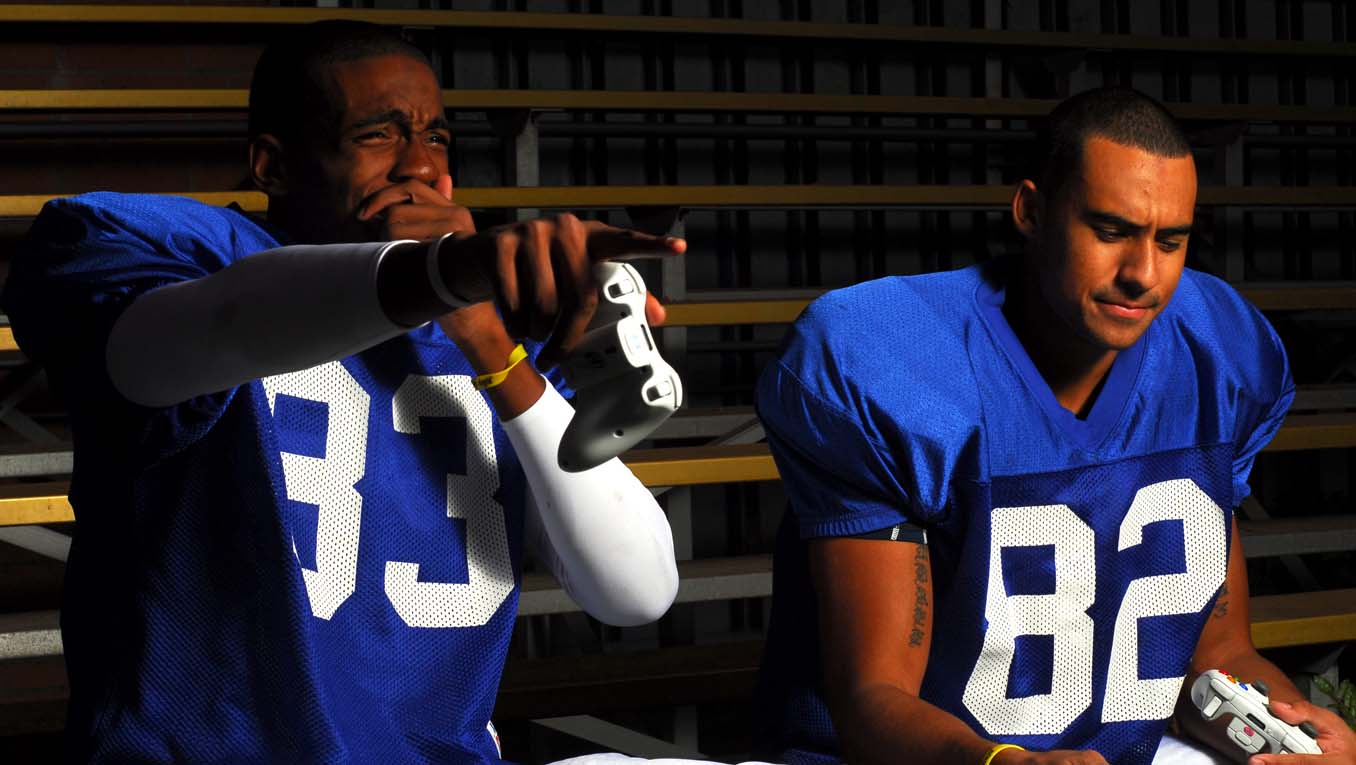Forget opposing teams.
Hour after hour, members of the UCLA football team compete against each other.
Freshmen, antsy to prove their merit, relentlessly attempt to knock off upperclassmen. Defensive players and their offensive counterparts match up to determine which unit is superior.
They scheme and game-plan and don’t stop until a winner is proclaimed.
Oh, and they do a bit of competing on the field, too.
Following grueling afternoons at Spaulding Field, a number of Bruins consistently gather around a television set, hook up the latest college football video game and simply compete.
No pads, no helmets and no cleats ““ just a few controllers and enough trash-talking to satisfy Chad Ochocinco.
“We get after it a little bit,” redshirt freshman quarterback Kevin Prince said earlier this season.
And although it’s fun to battle for bragging rights, Prince said that being a three-dimensional figure in the latest version of EA Sports’ “NCAA Football 2010″ is by far the best part about it ““ even if he is just represented by a nameless Bruin quarterback wearing his No. 14 jersey.
“It’s pretty cool,” he said. “It’s just a video game, but it’s cool to think that you’re playing in the game and playing for UCLA.”
Sophomore receiver Taylor Embree, another avid gamer, recalls playing older versions of the game non-stop when he and his brother were younger.
Now, a digital Bruin receiver wearing No. 82 is armed with the skills and attributes that resemble his.
“Growing up we played that game all the time,” Embree said. “When my dad was coaching at Colorado we’d get excited because we’d see people we knew in the game. Now that I’m in it, I get friends calling me.”
Controversy
The representation of student-athletes in the game, however, is a controversial topic.
Back in late July, former UCLA basketball standout Ed O’Bannon, who led the Bruins to the 1995 National Championship, sued the NCAA for its use of former student-athletes’ images in various media, including video games.
O’Bannon’s suit claims that the NCAA, along with its conferences and schools, “reap millions of dollars from revenue streams” while former student-athletes do not receive any compensation.
“The NCAA has been doing people wrong for a long time,” O’Bannon wrote in a letter posted on his blog at LostLettermen.com. “It’s about time something changes. That’s the bottom line.”
Players, distinguished by their uniform number and position, are given ratings based on actual talent level. UCLA senior cornerback Alterraun Verner, arguably one of the Bruins’ best players, is rated a 94 overall out of a possible 99 and his speed rating is a 92.
Embree, meanwhile, understands O’Bannon’s argument but doesn’t think players should get paid for having a likeness to the animated figures running around in the game.
“Shoot, the game is made for little kids,” he said. “It’s not like our names are in it or anything. Really, it’s just the numbers.”
Fellow sophomore receiver Nelson Rosario, who claims to be the best gamer on the team, offered a different solution.
“Maybe the players can get paid with recognition ““ like actually using our names,” Rosario said. “Maybe we can get a little discount for being in the game.”
Benefiting from entertainment
Verner enjoys playing for fun, but he takes his gaming to another level.
Besides the joy that comes with being a depicted character, Verner believes the game has its benefits, especially for a football junky like himself.
“It’s a stress relief,” said Verner, who many players raved to be among the team’s best gamers. “It carries over. If you’re doing all that other football stuff, (gaming) rubs into it and ends up being a learning experience also.”
During a typical week, members of the football team must balance their class work with practice, games, film sessions and weight room training. Having the ability to maintain a football mindset, even during downtime, is a valuable luxury.
That’s where the video game’s high realism comes into play.
“A lot of formations and concepts are still similar to what you see real teams play,” Verner said. “The programmers do a very good job of depicting the stadiums and try to get the crowd noise down to a tee.”
The game’s developers also designate a handful of so-called “impact players” for each team, labeling them with a star insignia ““ which is yet another helpful facet, Verner said.
“Anytime you play a team, you’re not too familiar with them,” he said. “So you go straight to the roster and check for impact players, who’s got the most speed and things like that.”
Rosario also commented on how realistic the game’s characters are.
“If they’re fast in real life, they’re fast in the game,” he said.
But despite all the effort to make the game as realistic as possible, the programmers don’t get every detail right. Embree, for instance, complained about the skin tone of UCLA’s No. 82 receiver.
“They made me pink,” he said half-jokingly. “I guess you’ve got to be known, so we’ll see how I look next year.”
Now it’s all about grabbing the developers’ attention.
“I’ve just got to make plays,” Embree said with a smile.
So the Bruins will keep playing, and not just on the field.
